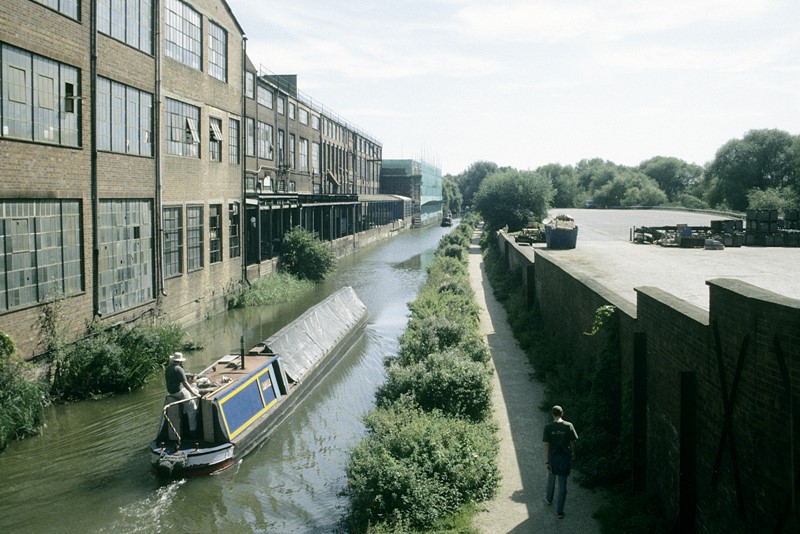
A traditional-styled narrowboat, with small living quarters to allow maximum cargo space, passing Lucy’s Foundry on the Oxford Canal. Originally known as the ‘Jericho Iron and Brass Foundry’ when opened in 1825, it has now been replaced by housing on both sides of the canal. This picture was taken shortly before its closure in the 1990s.
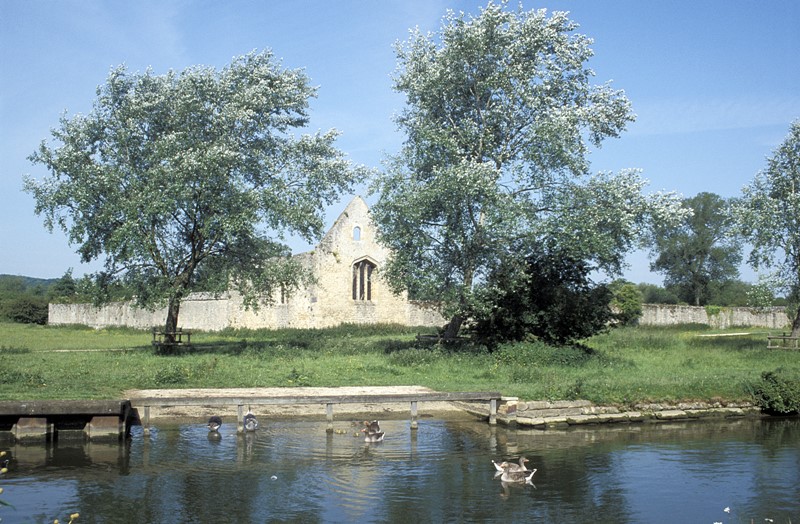
The remains of Godstow Nunnery. Founded in the 12th century, the Thames-side nunnery is most famous as the resting place of Rosamund Clifford, known as Rosamund the Fair, the mistress of King Henry II. It was at a picnic nearby in 1862 that the story of Alice’s Adventures in Wonderland had its birth.
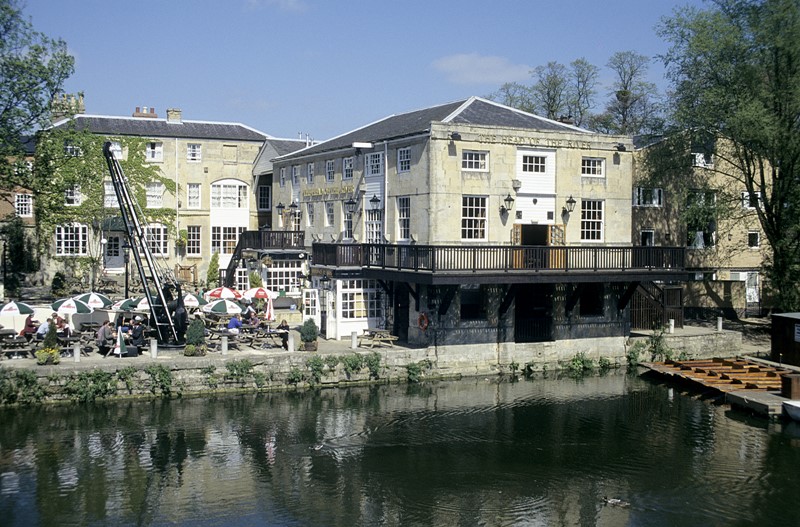
Head of the River pub at Folly Bridge was formerly used by Salter Brothers for building and repairing boats – note the crane. The building is close to the finish line of the annual rowing races on the River Thames, the winning boat being known as ‘The Head of the River’ until the following year.
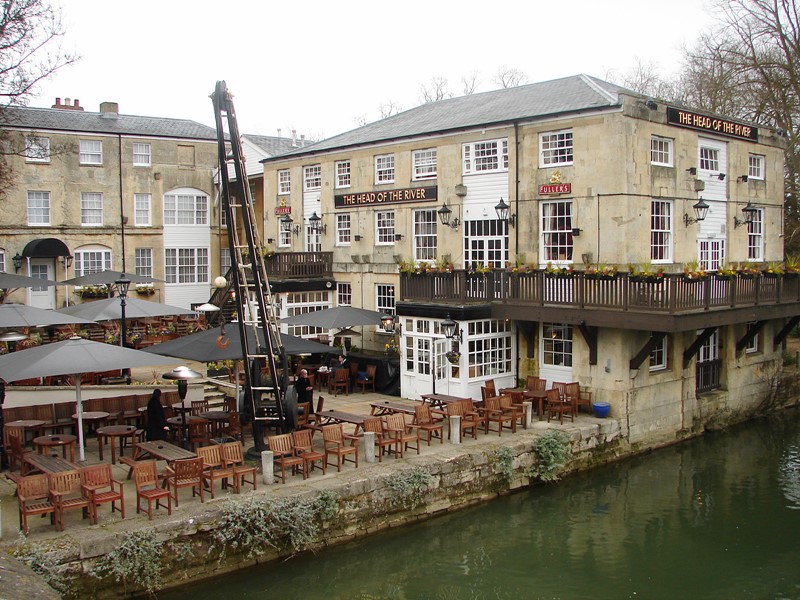
The Head of the River and Folly Bridge – the former warehouse and wharf by Folly Bridge was made into a pub in the 20th century
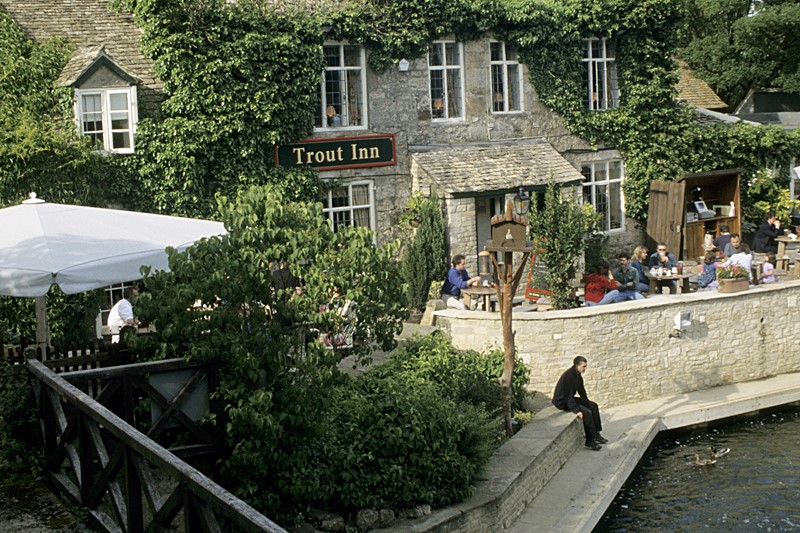
The Trout pub at Godstow. Originally a fish-weir keeper’s house, its picturesque setting has made it a popular watering hole for centuries. Historically it stood precisely on the city boundary, meaning that drinkers in one part of the building were subject to the licencing rules of the city, while those in another bar were not! In recent time it has become renowned as a favourite of Inspector Morse and also features prominently in the story of Philip Pullman’s ‘Lyra’.
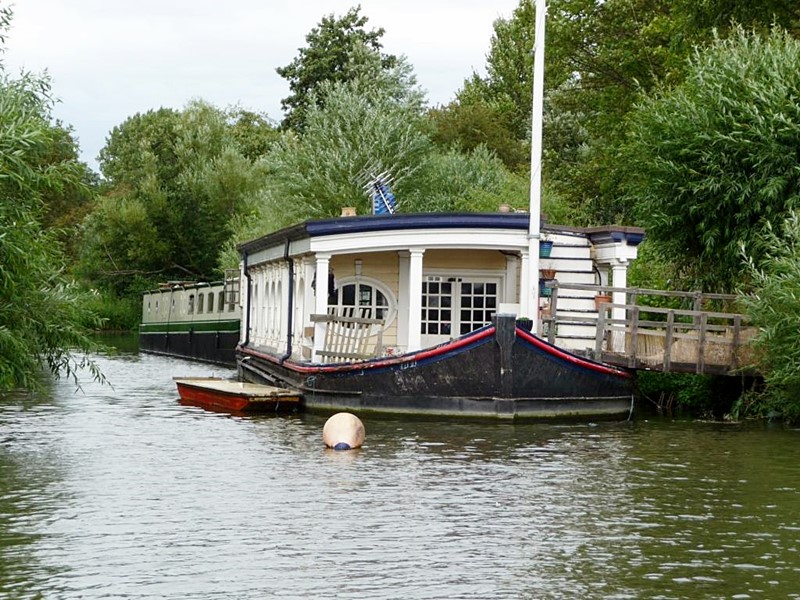
The Corpus Christi Barge. Built in Oxford by Salters in the 1930s, it is one of only three college barges remaining in the Oxford area. One is a private residence, one is used as an annex for a hotel and this one is owned by a charitable trust. The occupant’s rent goes towards the cost of upkeep.
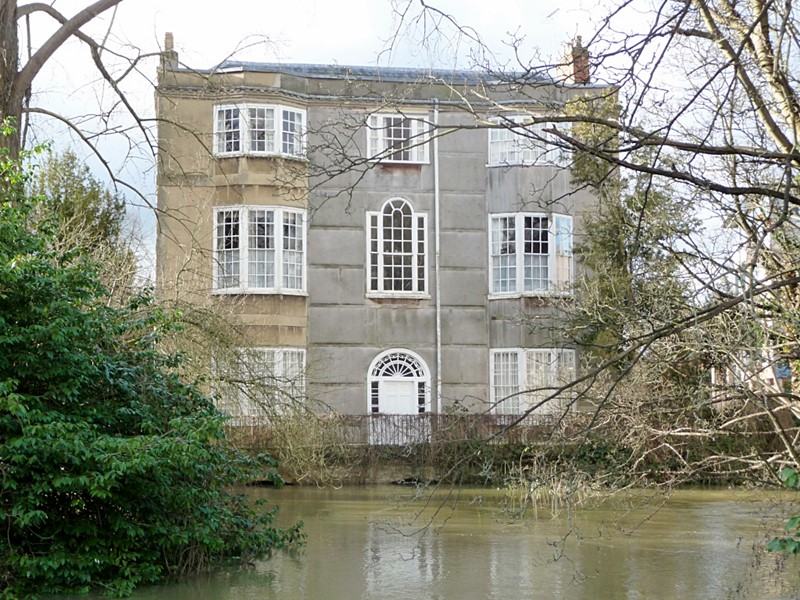
Grandpont House was constructed in the 1780s on arches as a precaution against the flooding which was, and remains, a particular threat at this Thames-side location, just downstream from Folly Bridge. A frequent visitor was Alice (in Wonderland) Liddell, who recalled in 1932, when she was aged 80, the particular pleasure of visiting the owner, Thomas Randall. Randall was a hatter, and there is reason to believe that he may have inspired Lewis Carroll’s character of The Hatter.
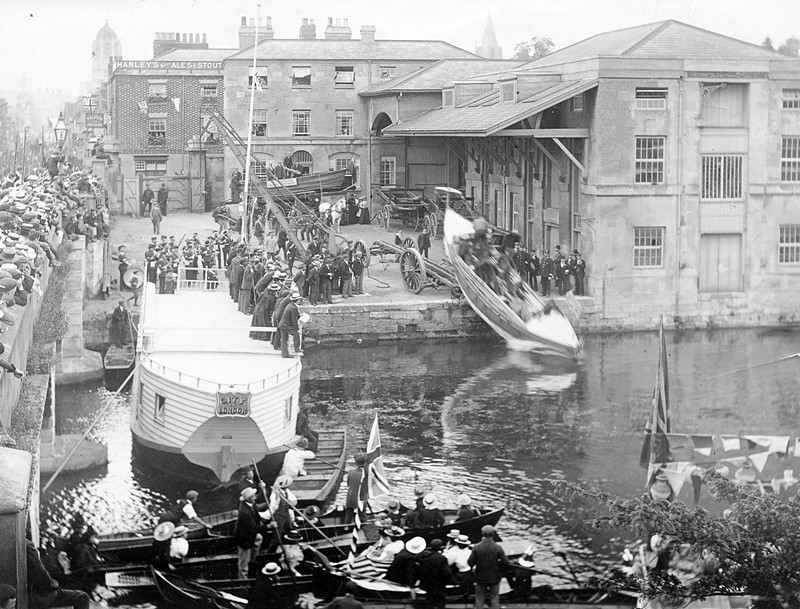
Local dignitaries hold on tightly as they are launched onto the Thames from Salters boatyard at Folly Bridge on Lifeboat Day in June 1900 (Henry Taunt).
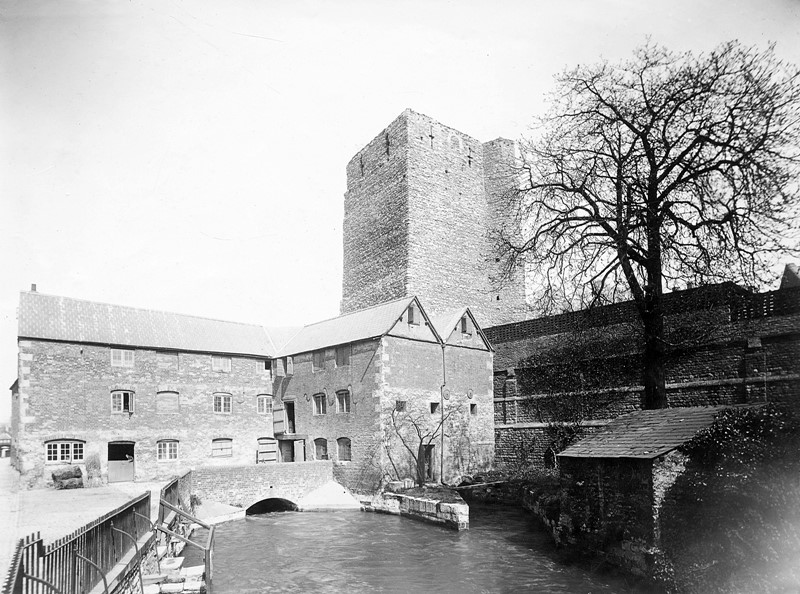
Oxford Castle Mill and St George's Tower, 1901 (Henry Taunt). The flour mill stands over the Castle Mill Stream, and had been in existence since at least the 11th century, when the adjacent Norman castle was built. The tower features in one of Oxford’s most famous stories: the escape of the Empress Matilda from one of its windows and over the frozen river in 1142. The mill was demolished in 1930.
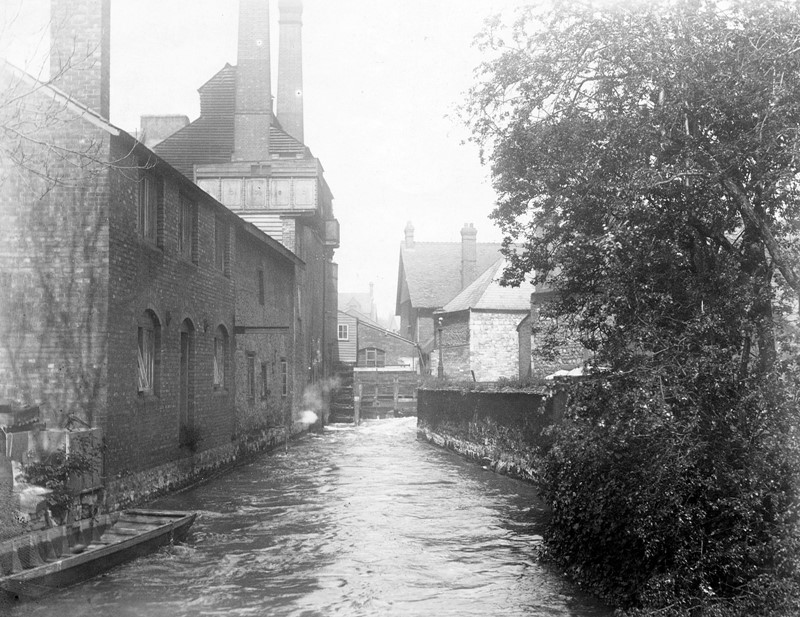
Morrells Brewery, 1920 (Henry Taunt). The parish of St Thomas' has been home to Oxford’s brewing industry since the middle ages, and the brewery run by the Morrell family survived the longest, closing in 1998. Several branches of the River Thames flow through the low-lying suburb, providing water both for the product and for power: the photograph shows the Wareham Stream and the brewery’s waterwheel.
Oxford
Section 2. Using the river for industryOxford has no large embankments. The Thames (Isis) Path can take you all the way to London and the towpath, along which horses used to pull the canal barges, is now an attractive canal-side walk. All these paths are popular with walkers, but they often become impassable in the winter. Magdalen Tower, a symbol of Oxford, is built on a small area of solid rock immediately above the Cherwell, while close to Folly Bridge are a few grand houses; but along the banks of the rivers it was safer to construct smaller buildings like the greenhouses in the Botanical Gardens, a short distance from Magdalen Tower. Therefore in this section we show how typical Oxford industries used the water for mills (for grinding wheat into flour), for brewing beer (an important industry in Oxford until well into the twentieth century) and for boatbuilding at Salter’s boatyard.